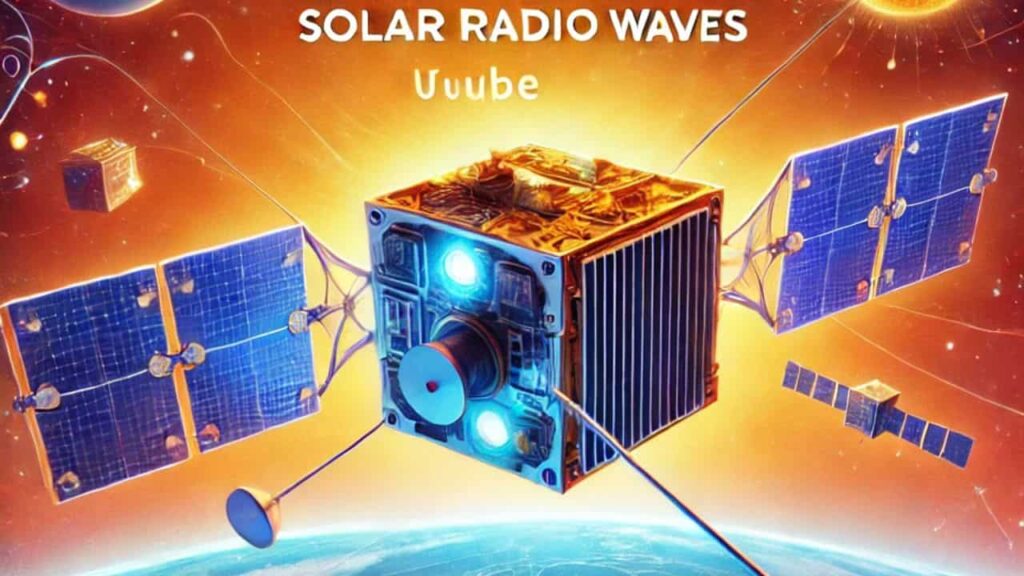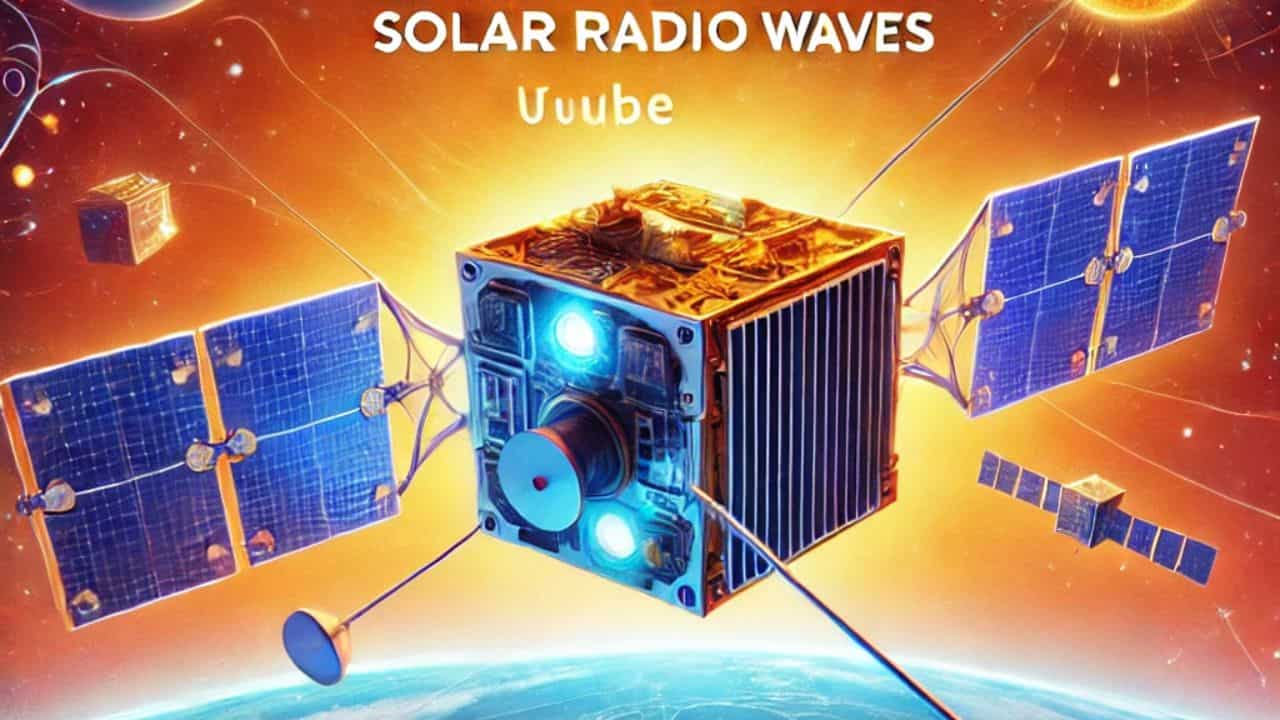NASA CURIE Mission, Solar Radio Waves, CubeSat Radio Interferometry, Solar Flares, Coronal Mass Ejections, Space Weather, CubeSat Technology, Radio Astronomy, Space-Based Interferometry, SunRISE Mission
Discover how NASA’s CubeSat Radio Interferometry Experiment (CURIE) aims to uncover the mysteries of solar radio waves. Learn about the groundbreaking techniques and innovations that will advance our understanding of solar phenomena and improve space weather forecasting.

NASA’s CubeSat Radio Interferometry Experiment (CURIE): Investigating the Origins of Solar Radio Waves
On July 9, 2024, NASA is set to launch a groundbreaking mission aimed at unraveling the mysteries behind the origins of solar radio waves. The mission, known as the CubeSat Radio Interferometry Experiment (CURIE), will utilize advanced technology and innovative techniques to explore the radio waves emanating from the Sun. These radio waves, first detected decades ago, are linked to solar flares and coronal mass ejections (CMEs) – massive eruptions on the Sun that significantly influence space weather and can affect satellite communications on Earth. Despite extensive research, the precise origin of these radio waves within CMEs remains unknown. CURIE aims to shed light on this enigmatic phenomenon.
The Mission and Its Objectives
CURIE will employ a novel method called low-frequency radio interferometry, a technique that has never been deployed in space before. This method involves two independent spacecraft, each no larger than a shoebox, which will orbit Earth approximately two miles apart. This distance allows CURIE’s instruments to detect minuscule differences in the arrival time of radio waves, enabling scientists to pinpoint their exact source.
David Sundkvist, the Principal Investigator and a researcher at the University of California, Berkeley, emphasizes the mission’s significance: “This is a very ambitious and very exciting mission. This is the first time that someone is ever flying a radio interferometer in space in a controlled way, and so it’s a pathfinder for radio astronomy in general.” The spacecraft, developed by a team from UC Berkeley, will measure radio waves ranging from 0.1 to 19 megahertz. These wavelengths are blocked by Earth’s upper atmosphere, making space the only viable location for this research.
Launch and Deployment
CURIE will be launched aboard an ESA (European Space Agency) Ariane 6 rocket from the Guiana Space Center in Kourou, French Guiana. The mission will commence from an altitude of 360 miles above Earth’s surface, providing a clear vantage point to observe the Sun’s radio waves. Once in a circular orbit, the two interconnected CURIE spacecraft will establish communication with ground stations before separating. After separation, the dual eight-foot antennas on each satellite will deploy and begin data collection.
Technological Innovation
The CURIE mission is sponsored by NASA’s Heliophysics Flight Opportunities for Research and Technology (H-FORT) Program and is the sole mission on the NASA CubeSat Launch Initiative’s ELaNa (Educational Launch of Nanosatellites) 43 mission. CURIE’s success will demonstrate the feasibility of space-based radio interferometry using CubeSats, which are significantly smaller and more cost-effective than traditional satellites.
Advancing Radio Astronomy
CURIE’s mission is not only to solve the mystery of the origins of solar radio waves but also to pave the way for future missions like the Sun Radio Interferometer Space Experiment (SunRISE). SunRISE will use six CubeSats to map the region where solar radio waves originate in two dimensions. This advancement will provide a more comprehensive understanding of solar phenomena and their effects on space weather.
Scientific Importance
Understanding the origin of solar radio waves is crucial for several reasons. Firstly, it will enhance our knowledge of solar physics and the mechanisms behind solar flares and CMEs. Secondly, by pinpointing the source of these radio waves, scientists can improve space weather forecasting. This is vital for protecting satellites, astronauts, and even power grids on Earth from the adverse effects of solar storms.
Methodology
The technique of low-frequency radio interferometry relies on the precise measurement of radio wave arrival times at two different points in space. By analyzing these differences, scientists can determine the direction and origin of the radio waves with high accuracy. CURIE’s two spacecraft, orbiting in tandem, will provide the necessary data for this analysis.
The spacecraft will be equipped with advanced instruments capable of detecting radio waves within the specified frequency range. These instruments will continuously monitor the Sun, capturing data on the radio waves produced during solar flares and CMEs. The data collected will be transmitted to ground stations, where it will be analyzed to identify the origin of the radio waves.
CURIE’s Contribution to Space Weather Research
Space weather refers to the environmental conditions in space as influenced by the Sun and the solar wind. Solar flares and CMEs are major components of space weather, capable of causing geomagnetic storms that can disrupt satellite operations, GPS systems, and power grids. By understanding the origins of solar radio waves, scientists can better predict and mitigate the impacts of space weather.
CURIE’s findings will contribute to the development of more accurate space weather models. These models can provide early warnings of solar storms, allowing for timely protective measures to be taken. For instance, satellites can be placed in safe modes, power grids can be adjusted, and astronauts can be sheltered from harmful radiation.
The Future of Space-Based Radio Astronomy
CURIE is a pioneering mission in the field of space-based radio astronomy. By demonstrating the viability of radio interferometry using small, cost-effective CubeSats, CURIE opens the door for future missions that can further explore the universe using this technology. The success of CURIE will validate the use of CubeSats for advanced scientific research, potentially leading to a new era of space exploration.
Collaboration and Innovation
The CURIE mission exemplifies the collaborative efforts of international space agencies and research institutions. The partnership between NASA, ESA, and UC Berkeley highlights the importance of global cooperation in advancing space science. The innovative use of CubeSats and the novel application of radio interferometry underscore the mission’s cutting-edge approach to solving long-standing scientific questions.
Conclusion
NASA’s CubeSat Radio Interferometry Experiment (CURIE) represents a significant step forward in our understanding of solar radio waves and their origins. By employing a groundbreaking technique and leveraging the capabilities of small, agile CubeSats, CURIE aims to uncover the mysteries behind the radio waves produced during solar flares and CMEs. The mission’s success will not only enhance our knowledge of solar physics but also improve space weather forecasting and pave the way for future advancements in space-based radio astronomy. As CURIE embarks on its journey, it marks the beginning of a new era of exploration and discovery in the realm of space science.
Read More
